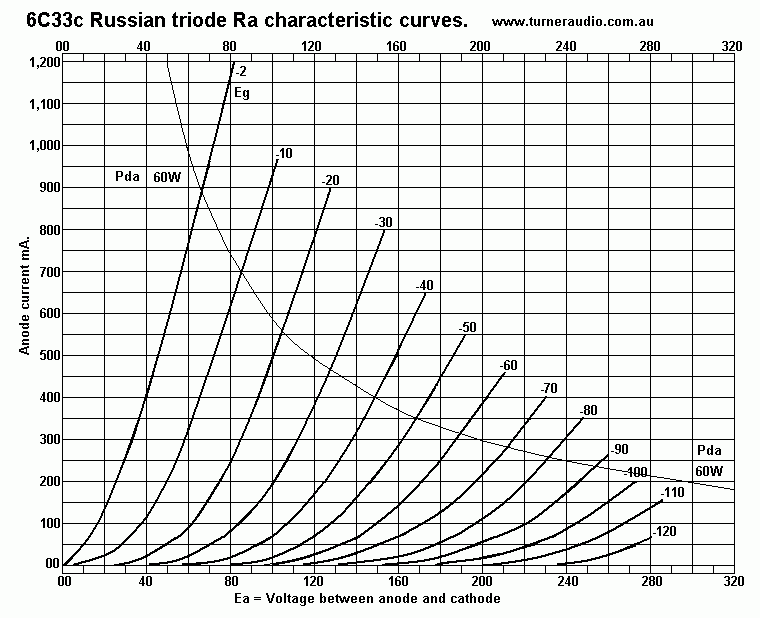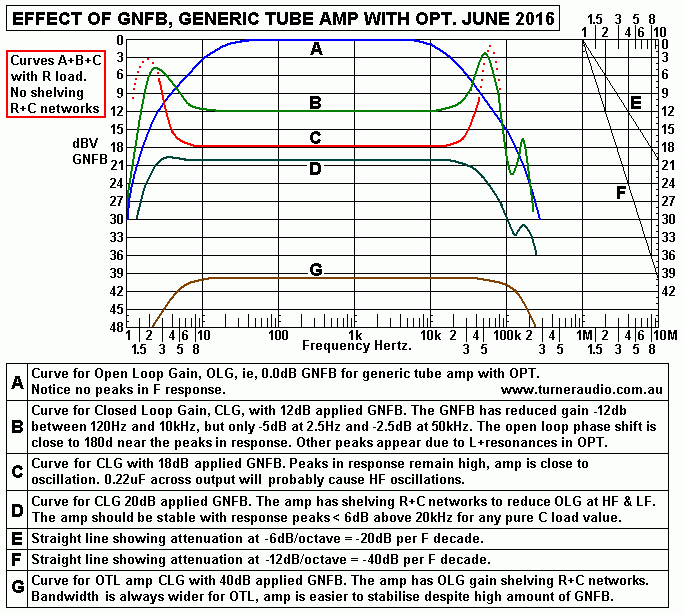
| Mains PT. 500VA. Pri Vin 50Hz. |
Secondary Vrms with Mains primary input, 1.25 Tesla. |
P:S Turn Ratio | P:S Z Ratio | Prim max Vrms 20Hz, 1.25 Tesla. |
Prim Z load, r. |
Sec Vrms max |
Sec Z load, r. |
Power output, W | Winding losses, total % |
| 240V |
50V//50V |
4.8 :1 | 23 :1 |
96V |
115r |
20V |
5r0 |
80W |
7% |
| 240V |
50V//50V |
4.8 :1 |
23 :1 |
96V |
58r |
20V |
2r5 |
160W |
14% |
| 240V |
50V+50V |
2.4 :1 |
5.8 :1 |
96V |
58r |
40V |
10r0 |
160W |
14% |
| Mains PT. 500VA. 603VA auto-T Vin 50Hz. |
Secondary Vrms with Mains primary input, 1.25 Tesla. |
P:S Turn Ratio | P:S Z Ratio | Prim max Vrms 20Hz, 1.25 Tesla. |
Prim Z load, r. |
Sec Vrms max |
Sec Z load, r. |
Power output, W | Winding losses, total % |
| 240V +50V |
50V//50V |
5.8 :1 | 33.6:1 |
116V |
140r |
20V |
4r2 |
95W |
6% |
| 240V +50V |
50V//50V |
5.8 :1 |
33.6:1 |
116V |
280r |
20V |
8r4 |
47W |
3% |
| 240V +100V |
50V+50V |
3.4 :1 |
11.6:1 |
136V |
164r |
48V |
11r7 |
196W |
6% |
| 240V +100V |
50V+50V |
3.4:1 |
11.6:1 |
136V |
82r |
48V |
5r9 |
390W |
12% |
| Mains PT. 500VA. Pri Vin 60Hz. |
Secondary Vrms with Mains Vin, 1.25 Tesla. |
P:S Turn Ratio | P:S Z Ratio | Prim max Vrms 20Hz, 1.25T |
Prim Z load, r. |
Sec Vrms max |
Sec Z load, r. |
Power output, W | Winding losses, total % |
| 2//117V |
15V//15V |
7.8 :1 | 60.8:1 |
39V |
27r4 |
5.0V |
0r45 |
55W |
7% |
| 2//117V |
15V+15V |
3.9 :1 |
15.2:1 |
39V |
27r4 |
10V |
1r8 |
55W |
7% |
| 2//117V |
15V+15V |
3.9 :1 |
15.2:1 |
39V |
54r8 |
10V |
3r6 |
27r5 |
3.5% |
| Mains PT. 500VA. 653VA for auto T. Pri Vin 60Hz. |
Secondary Vrms with Mains Vin, 1.25 Tesla. |
P:S Turn Ratio | P:S Z Ratio | Prim max Vrms 20Hz, 1.25T |
Prim Z load, r. |
Sec Vrms max |
Sec Z load, r. |
Power output, W | Winding losses, total % |
| 2x117V+15V 264V +CT |
+15V-15V CT only. |
8.8:1 | 77.4:1 |
+44V -44V |
124r |
+5.0V -5.0V |
1r6 |
62W |
6% |
| 2x117V+15V 264V +CT |
+15V-15V CT only. |
8.8:1 |
77.4:1 |
+44V -44V |
248r |
+5.0V -5.0V |
3r2 |
31W |
3% |
| 2x117V+15V 264V +CT |
+15V-15V CT only. |
8.8:1 |
77.4:1 |
+44V -44V |
496r |
+5.0V -5.0V |
6r4 |
15.5 |
1.5% |
| Mains PT. 625VA. Pri Vin 60Hz. |
Secondary Vrms with Mains Vin, 1.25 Tesla. |
P:S Turn Ratio | P:S Z Ratio | Prim max Vrms 20Hz, 1.25T |
Prim Z load, r. |
Sec Vrms max |
Sec Z load, r. |
Power output, W | Winding losses, total % |
| 2//117V |
24V//24V |
4.87:1 | 23.8:1 |
39V |
22r |
8.0V |
0r93 |
68W |
6% |
| 2//117V |
24V+24V |
2.44:1 |
5.93:1 |
39V |
22r |
16V |
3r7 |
68W |
6% |
| 2//117V |
24V+24V |
2.33:1 |
23.7:1 |
39V |
44r | 16V |
7r4 |
34W |
3.5% |
| 117V+117V | 24V+24V |
4.87:1 |
23.8:1 |
78V |
88r |
16V |
3r7 |
68W |
6% |
| Mains PT. 625VA. 752VA for Auto-T Pri Vin, at 60Hz. |
Secondary Vrms with Mains Vin, 1.25 Tesla. |
P:S Turn Ratio | P:S Z Ratio |
Prim max Vrms 20Hz, 1.25T |
Prim Z load, r. |
Sec Vrms max |
Sec Z load, r. |
Power output, W | Winding losses, total % |
| 2x117V+24V 282V +CT |
24V+24V only. |
5.88:1 | 34.5:1 |
+47V -47V |
106r |
16V +CT |
3r07 |
68W |
5%? |
| 2x117V+24V 282V +CT |
24V+24V only. |
5.88:1 | 34.5:1 | +47V -47V |
212r |
16V +CT |
6r2 |
34W |
2.5%? |
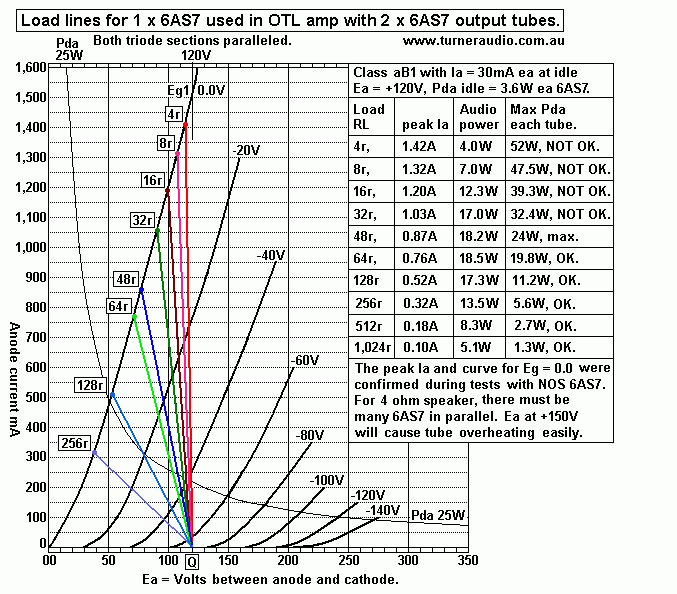
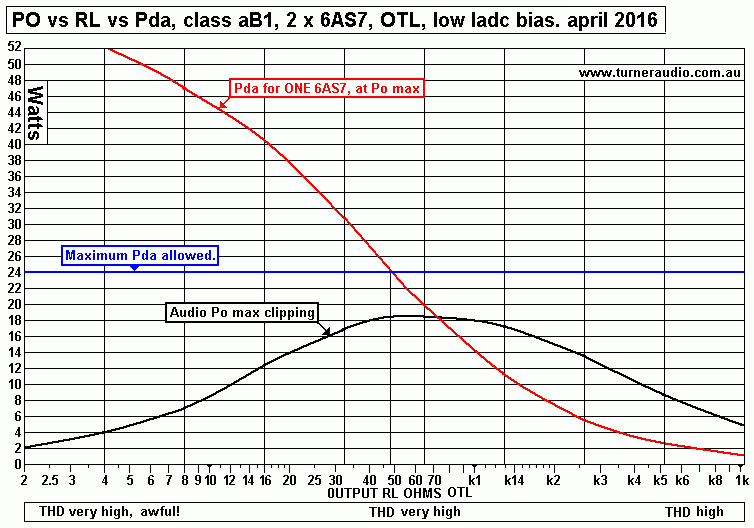
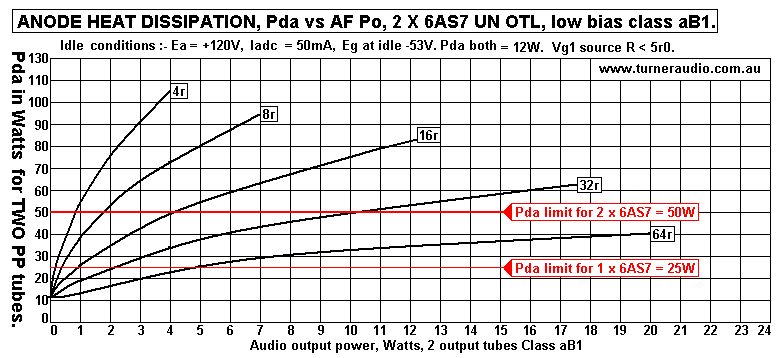
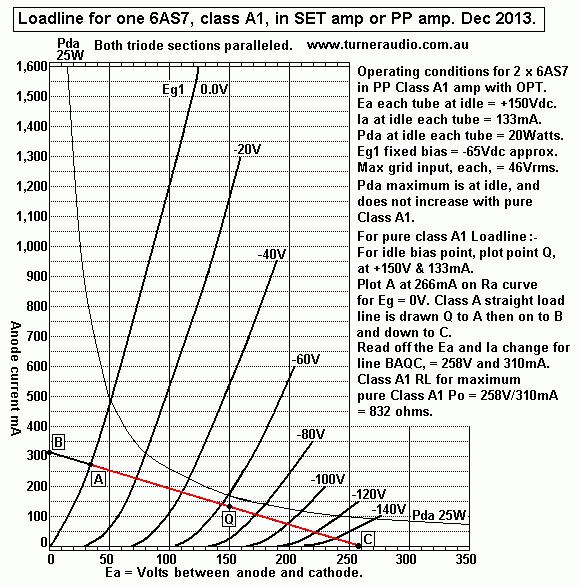
| Pairs
of SERIES tubes. |
OPT
prim load |
TR
for 4r0 sec |
TR
for 8r0 sec |
TR
for 16r0 sec |
Po class A1 |
| 1
pair 6AS7. |
416r |
10
: 1 |
7
: 1 |
5 :1 | 13W |
| 2
pairs 6AS7, or 1 pair 6C33c. |
208r |
7
: 1 |
5
: 1 |
3.5
: 1 |
26W |
| 3
pairs 6AS7. |
139r |
6
:1 |
4
: 1 |
3
:1 |
39W |
| 4
pairs 6AS7, or 2 pairs 6C33c. |
104r |
5
: 1 |
3.5
: 1 |
2.5
: 1 |
52W |
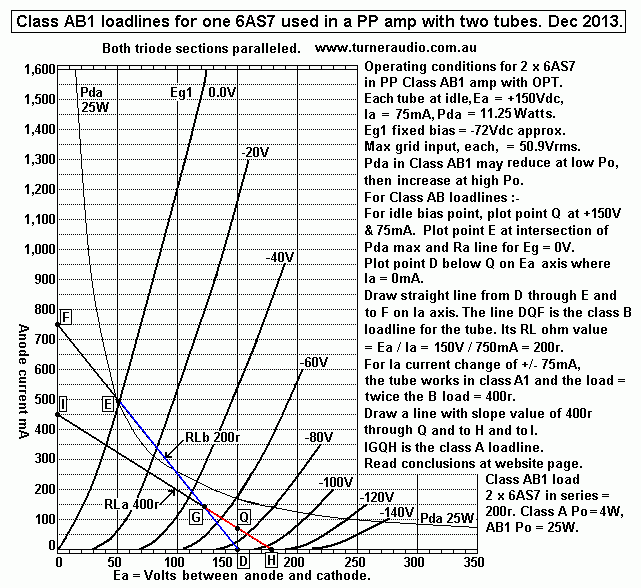
| Pairs
of normal PP tubes. |
OPT
RLa-a pri load |
TR
for 4r0 sec |
TR
for 8r0 sec |
TR
for 16r0 sec. |
Class AB Po |
| 1
pair 6AS7. |
800r |
14
: 1 |
10
: 1 |
7
: 1 |
25W |
| 2
pairs 6AS7, 1 pair 6C33c. |
400r |
10
: 1 |
7
: 1 |
5
: 1 |
50W |
| 3
pairs 6AS7, |
266r |
8
: 1 |
5.6
: 1 |
4
: 1 |
75W |
| 4
pairs 6AS7, 2 pairs 6C33c. |
200r |
7
: 1 |
5
: 1 |
3.5
: 1 |
100W |
| Pairs
of Series tubes. |
OPT
pri load |
TR
for 4r0 sec |
TR
for 8r0 sec |
TR
for 16r0 sec |
Class AB Po |
| 1 pair 6AS7. | 200r |
7
: 1 |
5
: 1 |
3.5
: 1 |
25W |
| 2
pairs 6AS7, 1 pair 6C33c. |
100r |
5
: 1 |
3.5
: 1 |
2.5
: 1 |
50W |
| 3 pairs 6AS7, | 66r |
4
: 1 |
2.8
: 1 |
2
: 1 |
75W |
| 4
pairs 6AS7, 2 pairs 6C33c. |
50r |
3.5
: 1 |
2.5
: 1 |
1.8
: 1 |
100W |
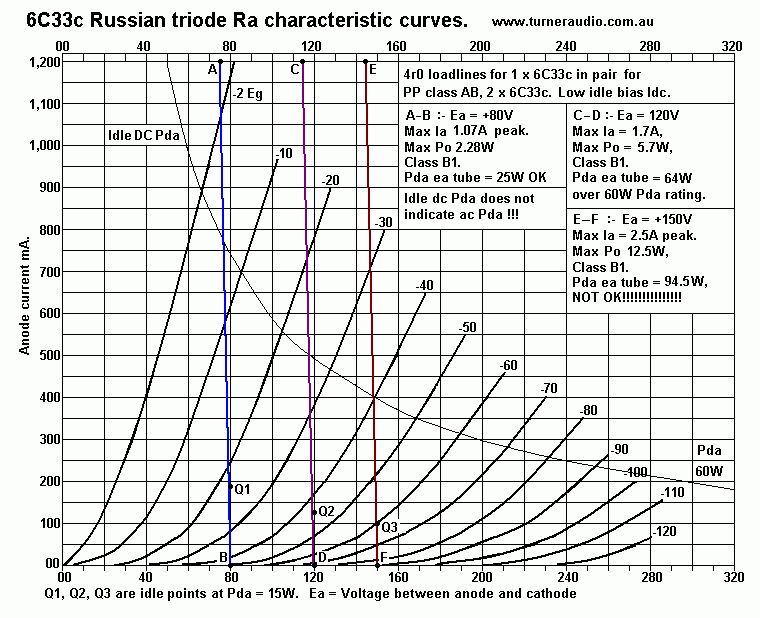
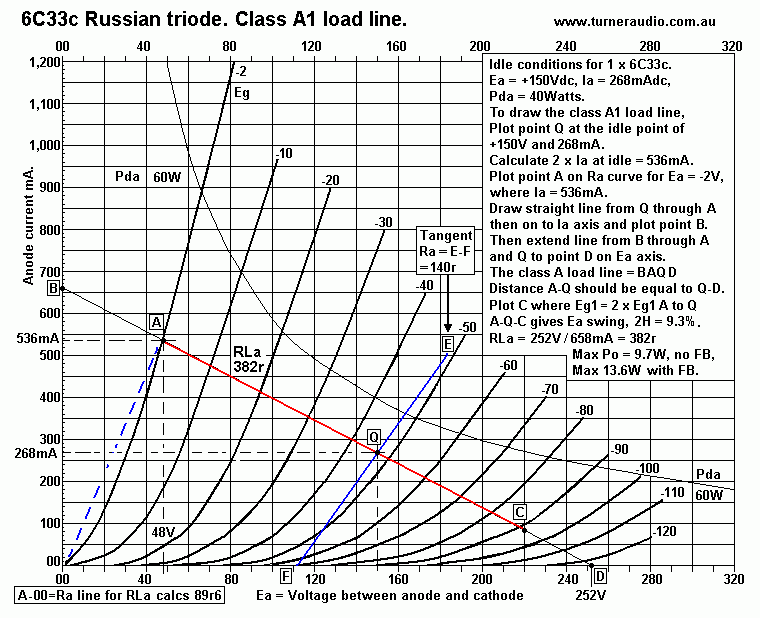
| Pda at idle, W |
Ea +Volts | Ia mAdc | RLa ohms |
Po W | Effic% | DF |
| 40W | 150 | 267 | 380 | 13.6 |
34 | 2.7 |
| 40W | 175 | 228 | 609 | 15.2 |
37 | 3.8 |
| 40W | 200 | 200 | 840 | 16.1 |
40 | 5.2 |
| 40W | 225 | 178 | 1,102 | 16.7 |
41 | 6.8 |
| Tube
configurations. |
Ea,
Vdc. |
Iadc,
mAdc. |
Primary
RL |
Po,
W Class A1 |
| OPT pri RLa for
one SET 6C33c. |
175 |
228 |
570r |
14.7 |
| OPT pri RLa for 2 parallel 6C33c. | 175 |
456 |
285r |
29.4 |
| OPT
pri RLa 4 parallel 6C33c. |
175 |
912 |
142r |
58.8 |
| 2
x 6C33c, Normal PP OPT, ct to B+ |
175 |
456 |
1,140r |
29.4 |
| 2
x 6C33c, Series Pair with C to OPT |
350 |
228 |
285r |
29.4 |
| 2
x 6C33c, Circlotron OPT, ct to 0V |
2
x floating 175 |
2 x 228 | 285r |
29.4 |
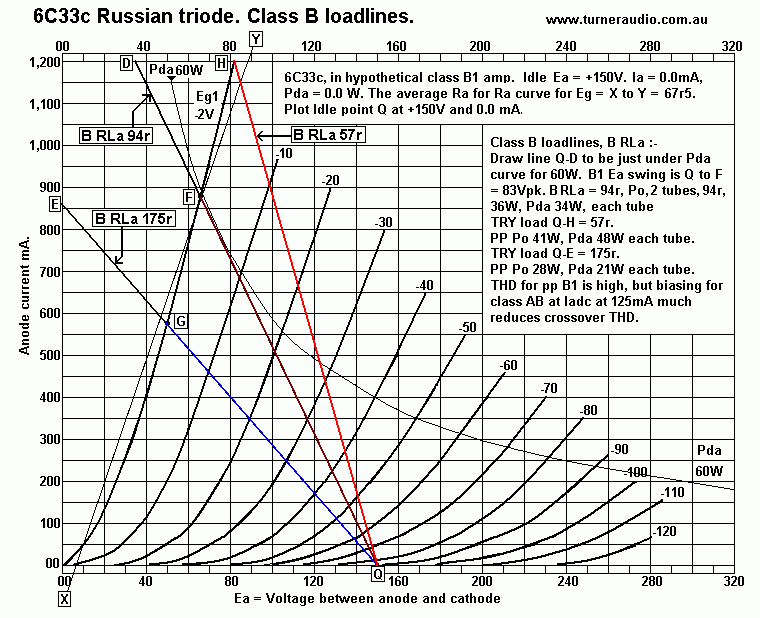
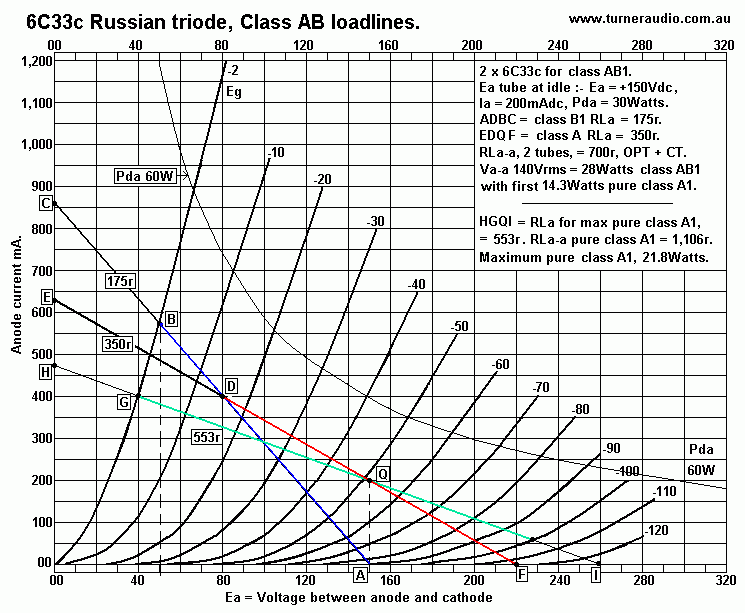
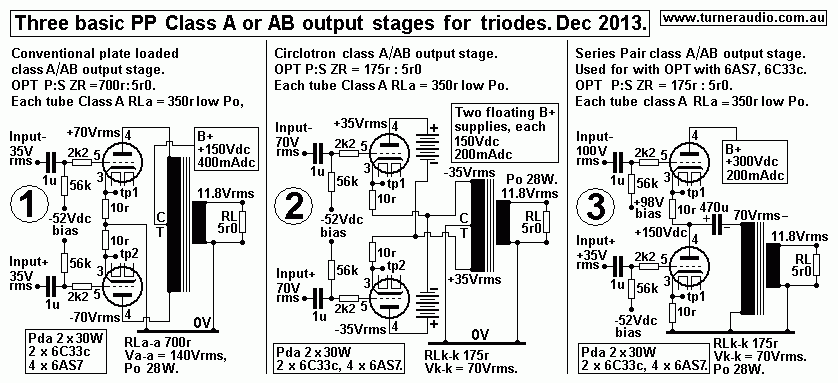
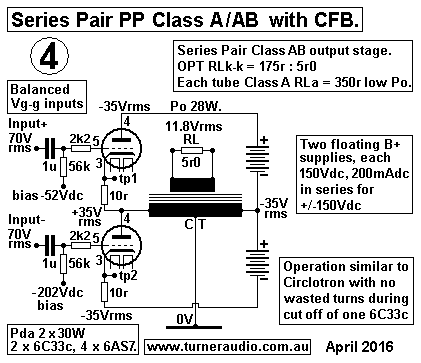
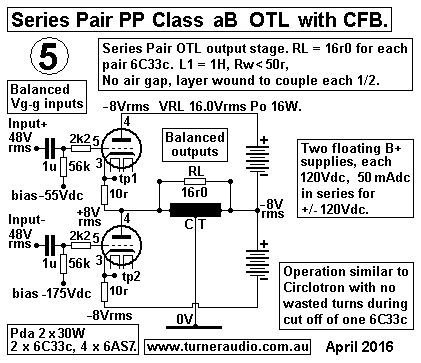
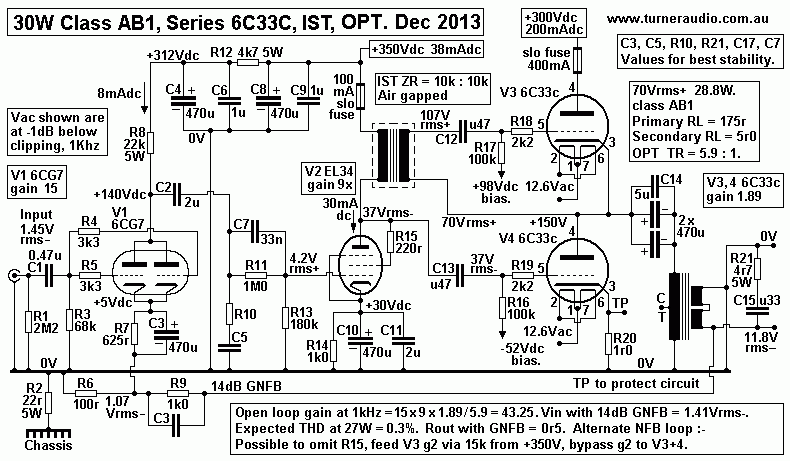
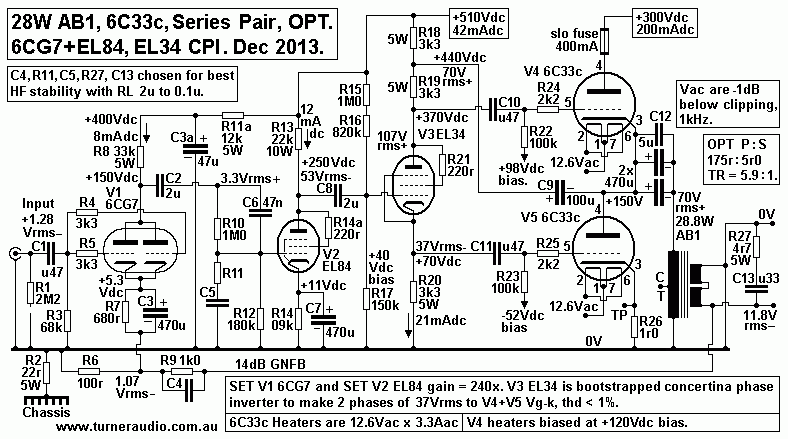
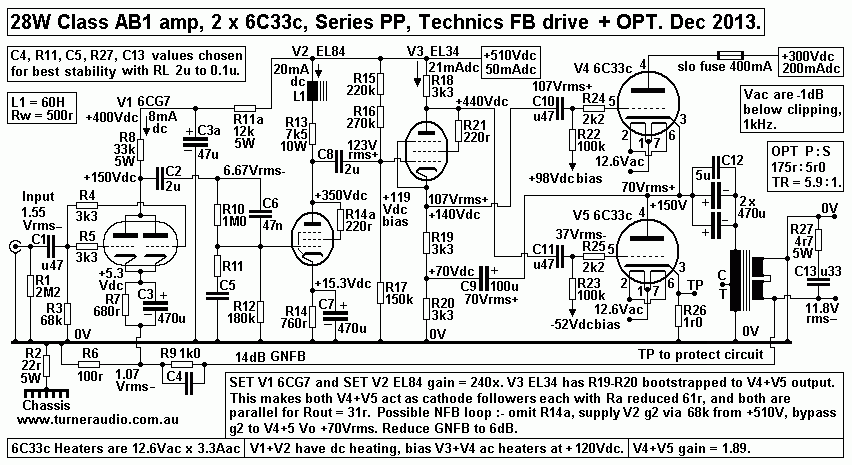
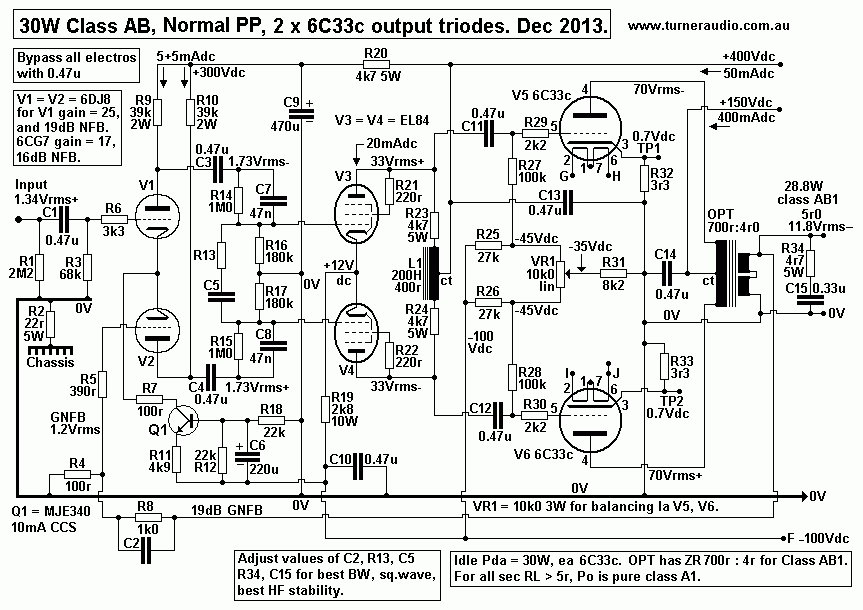
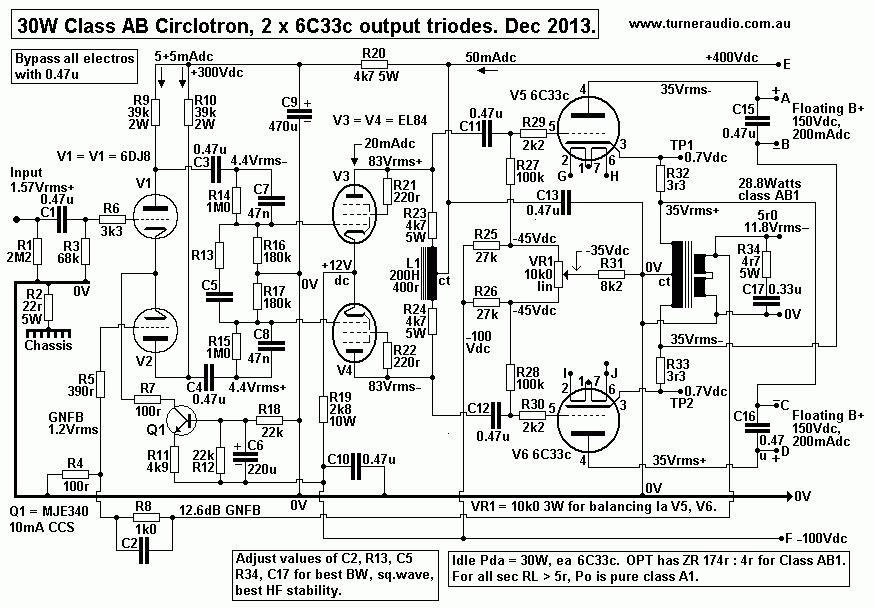
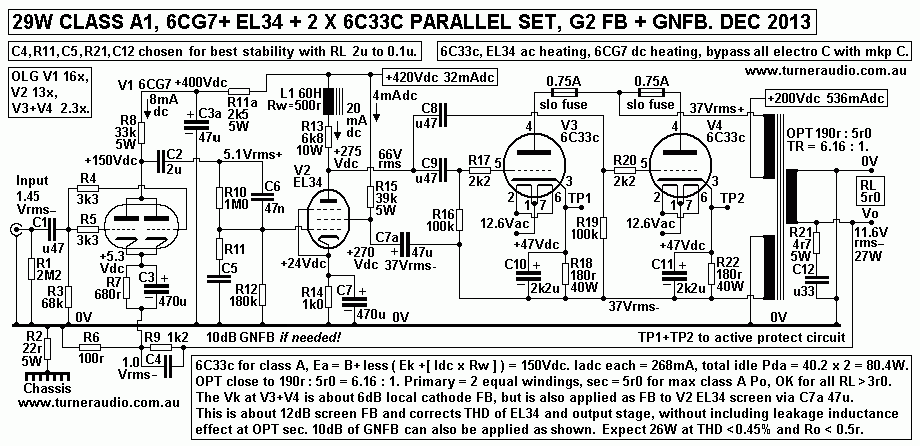
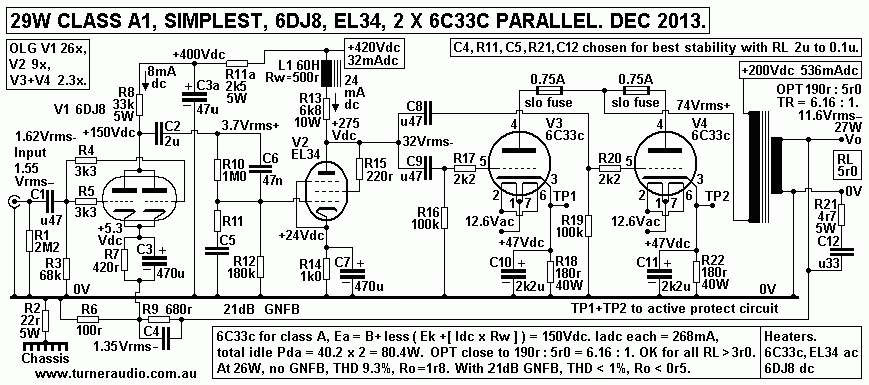
| Amp mode |
Idc |
Bac Tesla |
F sat Hz |
Rw loss % maximum |
Pri RL ohms r |
Sec RL ohms r |
ZR |
TR |
Vrms Prim |
Po W |
| Series Pair 2 x 6C33c 4 x 6AS7 |
zero |
1.2 |
20 |
8% |
175r |
5 |
35 |
5.9 |
70 |
28 AB |
| Series Pair 4 x 6C33c, 8 x 6AS7 |
zero |
1.2 |
20 |
8% |
88r |
5 |
17.5 |
4.2 |
70 |
56 AB |
| Normal PP OPT with CT |
balanced | 1.2 |
20 |
8% |
700r |
5 |
140 |
11.8 |
140 |
28 AB |
| Normal PP OPT with CT |
balanced | 1,2 |
20 |
8% |
350r |
5 |
70 |
8.4 |
140 |
56 AB |
| Circlotron 2 x 6C33c, 4 x 6AS7 |
balanced |
1.2 |
20 |
8% |
175r |
5 |
35 |
5.9 |
70 |
28 AB |
| Circlotron 4 x 6C33c, 8 x 6AS7 |
balanced |
1.2 |
20 |
8% |
88r |
5 |
17.5 |
4.2 |
70 |
56 AB |
| SET 2 x 6C33c 4 x 6AS7 |
536mA |
0.6 |
20 |
8% |
190r |
5 |
38 |
6.2 |
74 |
28 A |
| SET 4 x 6C33c 8 x 6AS7 |
1,072 mA |
0.6 |
20 |
8% |
95r |
5 |
19 |
4.4 |
74 |
56 A |
| thought |
needed |
for |
any |
success |
if |
you |
dare |
! |
! |
! |
